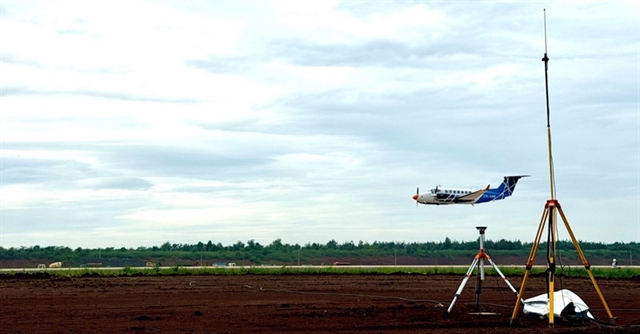 Inner Sanctum
Inner Sanctum

Phạm Tuấn Hải is a culinary expert, a passionate chef, a three-season Masterchef judge, owner of many restaurants and author of many books. Hai tells Hồng Vân that his latest publication, Trở về với cốm (Come back to cốm), aims to preserve as well as introduce traditional dishes.
 |
| Chef Phạm Tuấn Hải |
Phạm Tuấn Hải is a culinary expert, a passionate chef, a three-season Masterchef judge, owner of many restaurants and author of many books. Hai tells Hồng Vân that his latest publication, Trở về với cốm (Come back to cốm), aims to preserve as well as introduce traditional dishes.
Why does your book focus on cốm (young sticky rice flakes)?
As its name suggests, the book has menus and recipes of dishes made with cốm. There will be up to 60 cốm dishes, including appetizers, main courses and desserts. Both traditional and fusion dishes will be featured. Vietnamese people may be very familiar with dishes like chè cốm, chả cốm, and kem cốm, but I still want to introduce them in order to remind people of traditional dishes and to introduce them to foreigners. The book is expected to be released in January 2017 and translated into English and French.
To rephrase my question, Hà Nội’s cuisine has so many different kinds of bún, phở and pancakes. Why did you choose cốm as the major ingredient for dishes?
Cốm is a signature of Hà Nội. People think of cốm when talking about Hà Nội and vice versa. It is also close to our rice growing culture that has spanned a thousand years and more.
Personally, cốm has a special place in my heart. I was born in Hà Nội, and moved to HCM City to pursue cooking when I was 24. Living away from my hometown, I become nostalgic whenever someone talks about this signature dish of Hà Nội.
This time, I will be returning to my dear hometown after twenty years. Returning to Hà Nội is returning to cốm. Hence the name of the book: “Trở về với cốm” (Come back to cốm). I want to bring something to Hà Nội upon my return. I also hope cốm becomes better known and understood by foreigners.
Your passion and enthusiasm is obvious. How long did it take for you to finish this book?
The idea of a book about cốm germinated in the early days when I moved to Sài Gòn, so I have nurtured it for many years. Literally, it has taken me 20 years to release it. I have spent dozen of years studying cốm and creating new dishes using cốm as the main ingredient.
Tell us some of the challenges you faced when working on this book.
There were many. One is that I do not live in Hà Nội, home to cốm. So I had to travel frequently between Hà Nội and HCM City. Since cốm is in season only for a few months every year, it was difficult to organise these trips in time. Then I had to find a trusted source of cốm, contact the producers to learn about it and ensure its quality. I also encountered a lot of failure while creating new fusion dishes. Cốm is not an easy ingredient to work with. I had to cook again and again. Sometimes I had to give up on a new dish.
You have published a number of cook books. What is new about this one?
Apart from helping promote cốm and dishes using this ingredient, this book tells my stories, the challenges encountered and how I overcame them. I believe it will inspire food lovers, especially young chefs, to take up or pursue cooking with greater fervour.
In Việt Nam, chefs are still undervalued. It is a common thought that the chef does not need any qualification and is all about cooking. This is a message that I want to convey, that being a chef is more than just cooking. Qualities like patience, meticulousness, hard work, passion and creativity are required. This book will help those who want to pursue cooking beware of hardships and challenges that lie ahead.
What are your future plans?
I hope to find some investors to open more restaurants in Hà Nội. These restaurants will be in the Hoàn Kiếm Lake and Temple of Literature areas which attract a lot of foreign tourists. A cốm restaurant is also one of the plans. VNS




